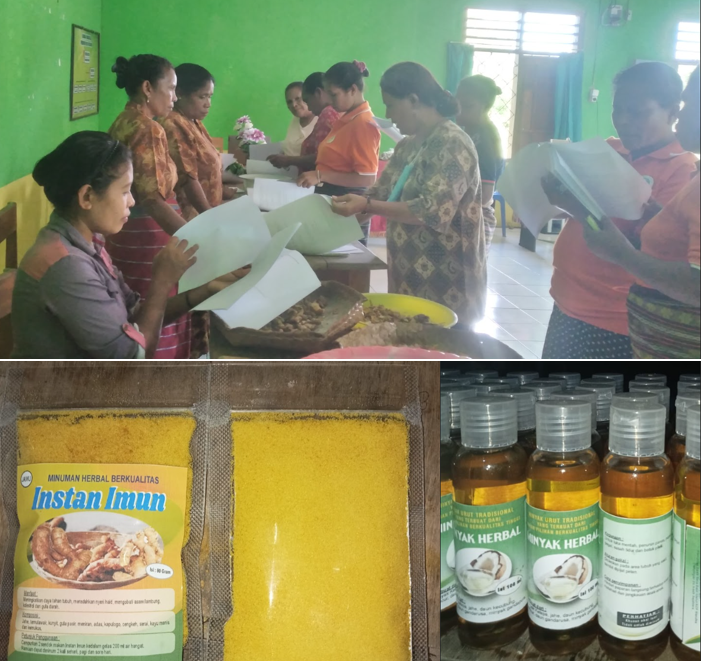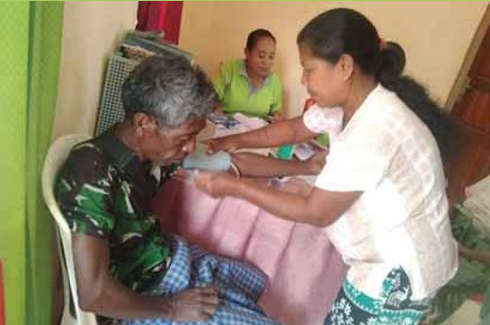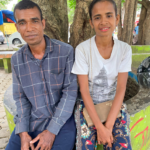


CST Approaches, PLHIV Health Improves
June 6, 2024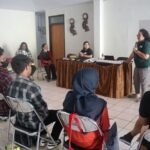


Beyond the Numbers: Evaluating Impact and Effectivities in the Integrated HIV Control Initiatives
September 18, 2024Integrated HIV and AIDS Control
The Integrated HIV and AIDS Control Programme in Belu District and Yogyakarta City, which has been running for over a year out of the planned three-year duration, builds on the previous Integrated Prevention of HIV and AIDS program in the same two areas. The program's objectives include enhancing the quality-of-care services at partner health centers and hospitals for HIV and AIDS control, increasing the local budget for HIV and AIDS response, and reducing drug withdrawal cases for PLHIV.
Since the program's inception, several modifications and changes have been made to some indicators. Notably, the budget increase for HIV and AIDS control by the local government, the first indicator, has seen a significant impact. The budget allotted to Yogyakarta City increased in 2023, rising from IDR 275,500,000 in 2021 to IDR 298,140,200, an 8.22% increase. This is a clear indication of the program's influence on the local budget, despite the government budget still placing a high priority on preventing stunting.
The program budget allocated for World AIDS Day, HIV and AIDS Control Regional Action Plan Strategy monitoring and evaluation, HIV and Sexual Transmitted Diseases (STD) capacity refreshment for analysts, updated knowledge for hepatitis prevention on PLHIV, HIV networking service coordination, HIV service improvement, VCT reagent procurement, Tuberculosis Prevention Therapy training on PLHIV for health staff, and training on services for victims of violence against women and children.
The budget allocation for HIV and AIDS control programs in Belu District in 2023 is lower than the 2021 baseline data. If the budget allocation was IDR345,388,000 in 2021, then it decreased by 33% to IDR231,200,000 in 2023. This decrease in budget allocation was beyond previous predictions. The overall amount of the Regional Income and Expenditure Budget in Belu District in 2023 decreased, thus affecting the decline in funding amount for HIV and AIDS control programs. The available budget allocation is used for key population outreach, PLHIV assistance, operational costs of the AIDS Commission (KPA), mobile VCT, and procurement of VCT reagents.
The first indication of accomplishment in the allocated budget increase for the HIV and AIDS control program for two areas in the first year has not been satisfied since the target is under expectation. Policy advocacy attempts to the Regional Representative Council and District/City Government that have been carried out have not brought maximum results.
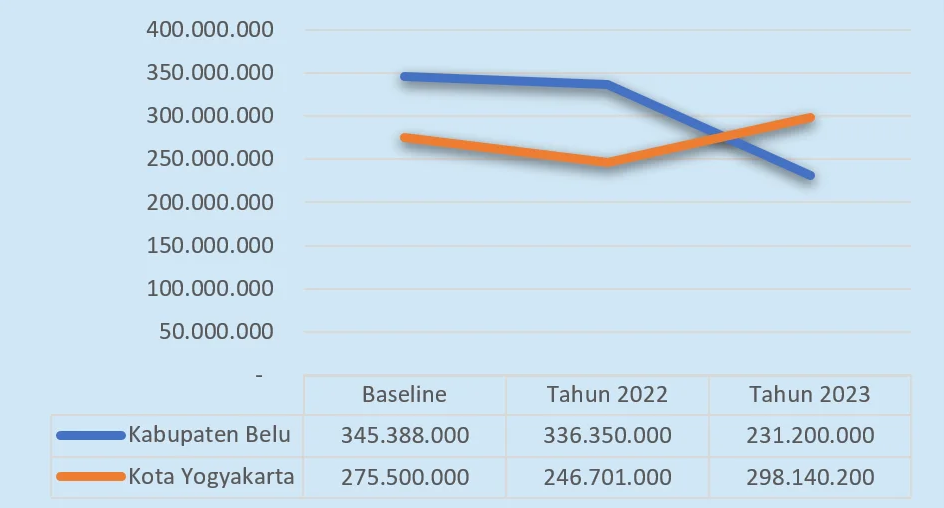

The second indicator is that 9 of 15 health service providers (the public health centers and hospitals) apply a Continuum of care for HIV following the standard set by the Ministry of Health Republic of Indonesia. Until the first seven years of this second phase, 11 health services (seven public health centers and four partner hospitals) apply the continuum of care for HIV. This accomplishment is beyond the set target (nine health services).
The eleven health services that already applied the continuum of care for HIV consist of five services in Belu Regency (Atambua Region Hospital, Marianum Halilulik Catholic Hospital, Atapupu Public Health Centre, Wedomu Public Health Centre, and South Atambua Public Health Centre). In Yogyakarta, there are Yogyakarta Region Hospital, Bethesda Hospital, Gedongtengen Public Health Centre, Umbulharjo 1 Public Health Centre, Tegalrejo Public Health Centre, and Mantrijeron Public Health Centre.
The third indicator is that 70% of assisted PLHIV routinely consume ARV. Until the first year of 2023, 88% of the PLHIV assisted were compliant with ARV consumption. In total, 216 PLHIV consisting of 138 men, 70 women, and eight transgenders were assisted through the Peer Support Group in Belu Regency and the Red Ribbon Association in Yogyakarta City. Of that number, 191 PLHIV (88%), namely 124 men, 65 women, and two transgenders, routinely consume ARVs. Although this achievement exceeds the set target of 70%, there are still 25 ODHIV (12%) who are Lost To Follow Up (LFU) or stopped taking medication.
In Belu Regency, 93 PLHIV out of a total of 98 people assisted have consumed ARVs regularly, and five PLHIV are LFU. Meanwhile, in Yogyakarta City, out of 118 PLHIV assisted, 98 PLHIV have consumed ARVs regularly, and 20 PLHIV are still LFU. Monitoring and Evaluation results in Yogyakarta City showed that the main reasons why PLHIV were LFU were because they did not dare to disclose their status to their family and thus lacked support, as well as experiencing stigma from health care workers and domestic violence. On the other hand, the attempt made by peer support groups through routine meetings, capacity building for PLHIV, and outreach to PLHIV who are LFU are quite effective and run optimally to increase treatment adherence so that the target of 70% of PLHIV assisted can be achieved.
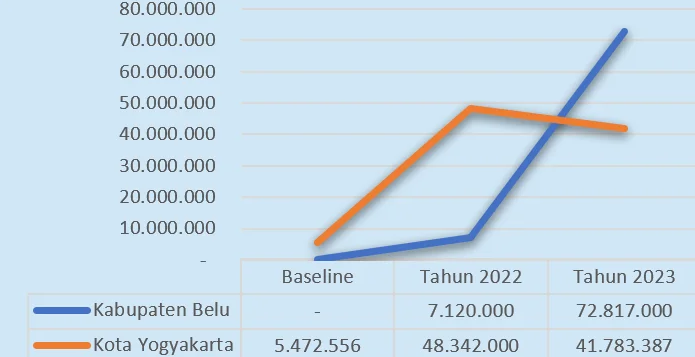

The fourth indicator is that as many as 16 served villages increased budget allocation for HIV and AIDS programs focused on vulnerable groups by 10%. There have been at least 13 villages that became partners of CD Bethesda YAKKUM, increasing the budget allocation for HIV and AIDS programs. The budget allocated to vulnerable groups increased by 1,994%, from IDR 5,472,556 to IDR 114,600,387. Five assisted villages in Belu District allocated budgets for HIV and AIDS programs focused on vulnerable groups of PLHIV and housewives with a total of IDR 72,817,000. Meanwhile, in Yogyakarta City, eight assisted villages have allocated budgets for HIV and AIDS Programmes focused on vulnerable groups of adolescents, housewives, tuberculosis patients, and patients with sexually transmitted infections (STIs) with a total of IDR 41,783,387. Although the achievement of the indicator in the first year has been entirely satisfactory in the amount of budget, the number of villages that budgeted has yet to be maximized because only 13 villages out of 16 targeted villages.
The fifth indicator is that as many as four recently assisted Peer Support Groups continue supporting activities for PLHIV and people living with PLHIV independently without any support from CD Bethesda. Until the program's first year, three Peer Support Groups formed at the end of the program's first phase have not continued assisting PLHIV and people who live with PLHIV independently but have started preparing for independence.
There are four peer support groups in the Belu District, and two of them have taken steps towards self-reliance by engaging in economic development activities as a group. In Yogyakarta City, one group is working towards self-reliance by ensuring legal compliance, creating a fundraising mechanism through deductions for internal resource persons' honorariums and voluntary contributions from members, and seeking funding from external sources to support their activities. These efforts have been successful.
Two funding activities were received from external parties: the International Community of Women Living with HIV ASIA PACIFIC (ICWAP) and the HIV and AIDS Advocacy Network DIY (JAVA DIY). ICWAP provided support for capacity building for members on Gender-Based Violence in Women with HIV. In contrast, JAVA DIY provided funding for one-time education for members on switching ARV regimens from TLE to TLD.
In general, the achievement of indicators needs to be running optimally. Preparations are still required to determine the type of economic development the Peer Support Group will undertake for self-reliance, including preparing a business plan and resources to manage the business.
The achievement of several program indicators at the end of the first year has been entirely satisfactory. However, several indicators still require hard work, one related to the increase in Village Income and Expenditure Budget allocation for HIV and AIDS programs. This increase has the potential to enhance our efforts significantly. Advocacy is conducted to increase government commitment to HIV and AIDS control attempts that focus on vulnerable groups.
Some of the suitable lessons learned in one year of program implementation are cross-sectoral cooperation, involvement of AIDS Care Communities and Peer Support Groups in HIV and AIDS prevention and response efforts as well as integration of HIV and AIDS issues into every activity in the community are very effective amid limited government resources in terms of budget and human resources. In addition, the SALT method is also an effective strategy in the budget proposal process for HIV and AIDS programs at the village level by fully involving the community to identify the potentials and dreams of high-risk families as part of the preparation of the village action plan. Issuing the Circular Letter on Village Budget Allocation for the HIV and AIDS Programme by the Village Community Development and Empowerment Programme has made the budget advocacy process for HIV response at the village level much more effective as it can reach other villages outside the intervention villages.
The active involvement of key figures and stakeholders in Belu District (Regent, Vice Regent, the Village Community Development and Empowerment Programme, and Community and Village Empowerment Office) is effective in accelerating the publication of HIV issues, increasing support for AIDS Care Communities and Peer Support Groups and making the budget advocacy process for HIV response at the village level much more effective. Lastly, capacity building and network strengthening for Peer Support Group members are practical efforts to increase member confidence, build a good image of the organization, increase opportunities to access funding for activities outside CD Bethesda YAKKUM and encourage their independence.
(Ghanis Kristia)

